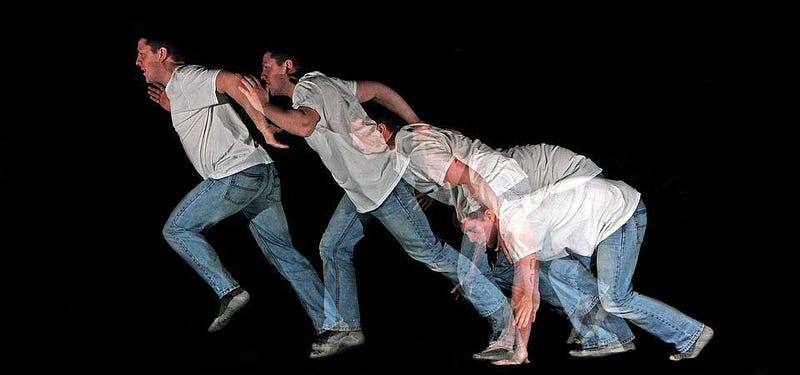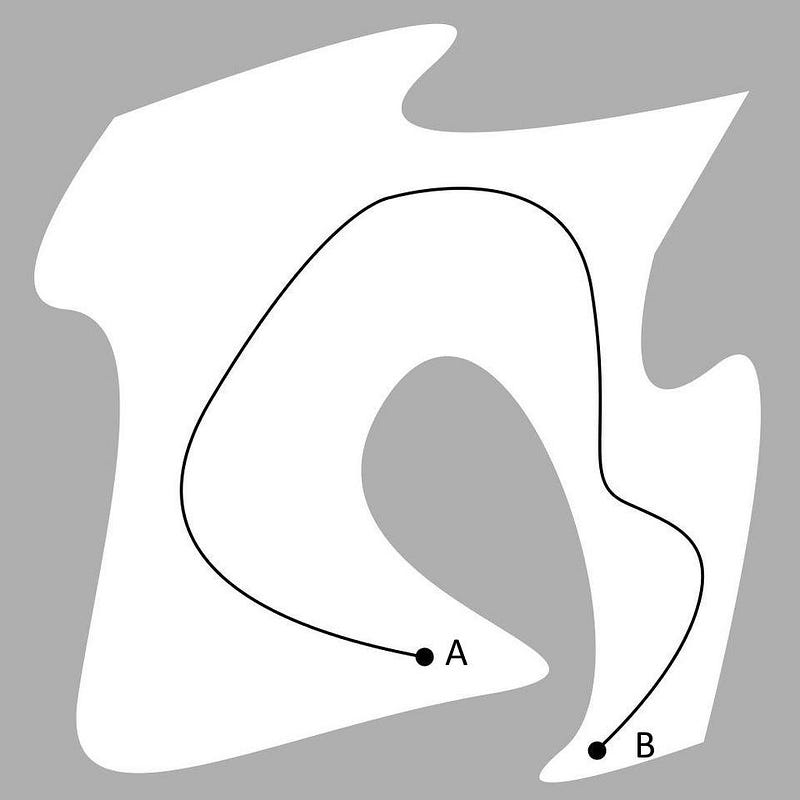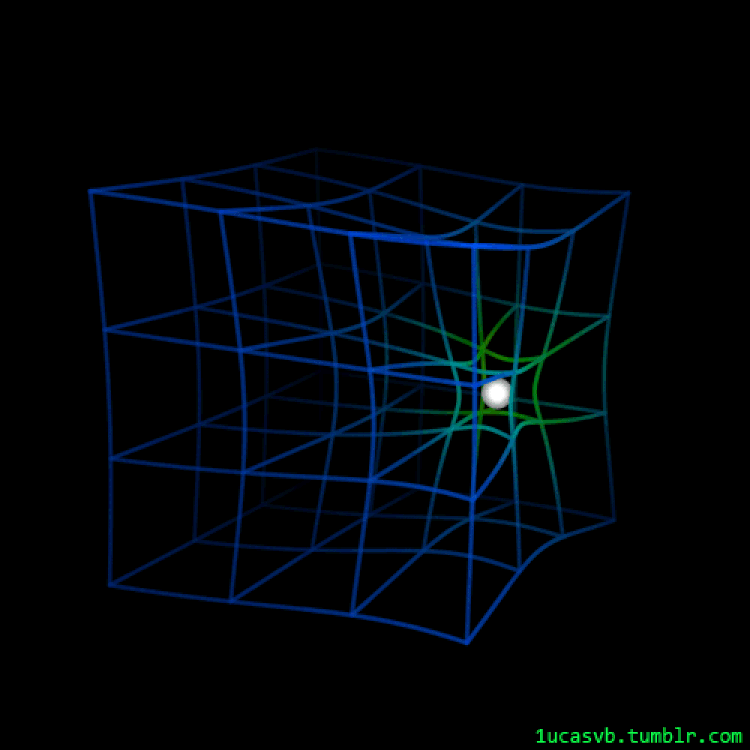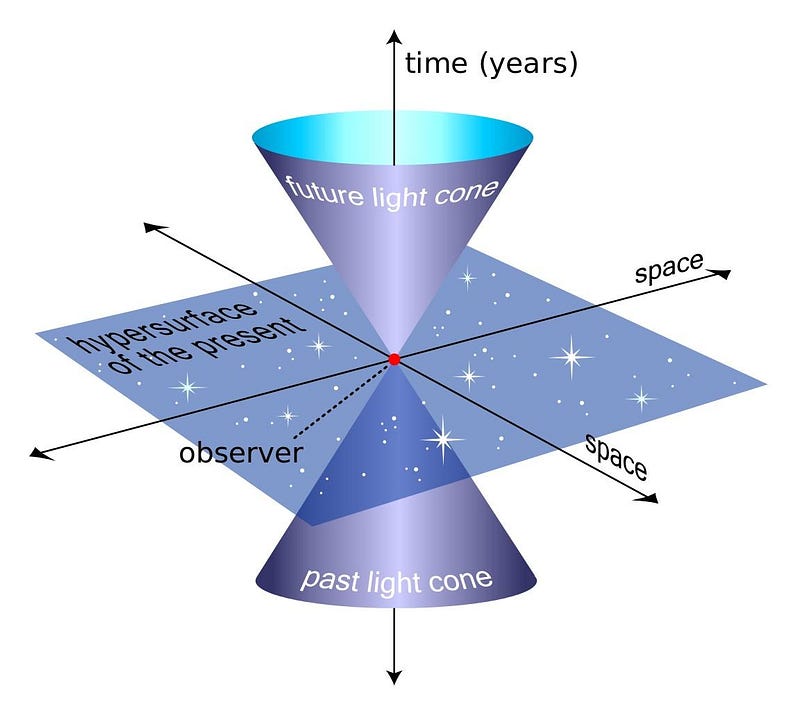This Is Why Time Has To Be A Dimension

You might think that we live in a three dimensional Universe based on space alone. But you cannot leave time out of it.
If you were asked to describe how you can move through the Universe, you’d probably think of all the different directions you were free to move in. You could go left or right, forwards or backwards, and upwards or downwards; that’s it. Those three independent directions, described by something as simple as a grid, describe all the possible ways once can move through space.
But those three dimensions are far from all there are. There’s a fourth dimension that’s just as important, even though it’s very different: time. We’re always moving forward through time, sure, but it’s just as much a dimension as any of the spatial ones. Whether you say we live in a four-dimensional Universe described by the fabric of spacetime, or a 3+1 dimensional Universe, where we have three spatial plus one time dimension, you cannot separate these entities from one another while still being physically correct. Let’s try and understand why.

Human beings, for the most part, live only on the surface of the Earth. When we want to describe where we’re located, we typically only have to give two coordinates: a latitude and longitude. We only need these two values, which describe where we’re located along the north-south and east-west axes of our planet, because the third dimension is a given: we’re on the Earth’s surface.
But if you’re willing to go either underground or into the air above Earth’s surface, you’d need a third coordinate to accurately describe your location: altitude/depth, or where you are on the up-down axis. After all, someone located at the exact same latitude and longitude as you — the same two-dimensional coordinates — could easily be in a subterranean tunnel or an overhead helicopter. They aren’t necessarily at the same exact location; you need three independent pieces of information to pinpoint your location in space.

But even two different objects with the same exact three-dimensional spatial coordinates might not overlap. The reason is easy to understand if you start thinking about the chair you’re sitting in right now. It can definitely have its location accurately described by those three spatial coordinates familiar to us: x, y, and z. This chair, however, is occupied by you right now, at this exact moment in time, as opposed to yesterday, an hour ago, next week, or ten years from now.
In order to completely describe an event in spacetime, you need to know more than just where it occurs, but also when it occurs. In addition to x, y, and z, you also need a time coordinate: t. Although this might seem obvious, it didn’t play a large role in physics until the development of Einstein’s relativity, when physicists started thinking about the issue of simultaneity. Imagine, if you will, two separate locations — a point “A” and a point “B” — connected by a path.

Imagine that you have one person who starts at A while the other starts at B, and they each travel towards the other point. You can visualize where each one is by placing a finger from each hand at A and B, and then “walking” them towards their respective destinations. There’s no way for the person starting at A to get to B without passing by the other person, and there’s no way the person starting at B can get to A without passing the first person.
In other words, in order for each person to arrive at their destination, there will need to be a moment where each of your two fingers occupy the same spot at the same time. In relativity, this is known as a simultaneous event: where all the space and time coordinates of two different physical objects overlap. This is not only non-controversial, it’s mathematically provable.

This thought experiment explains why time needs to be considered as a dimension that we move through, just as surely as our spatial dimensions are dimensions that we move through. It wasn’t Einstein, however, who put space and time together into a singular formulation that left them inextricable. Instead, it was Einstein’s former professor — Hermann Minkowski — who figured out how inseparable these two entities were.
Less than three years after Einstein first introduced his Special theory of Relativity, Minkowski demonstrated their unity with a brilliant line of reasoning. If you wish to move through space, you cannot do it instantaneously; you have to move from where you are right now to another spatial location, where you’ll only arrive at some point in the future. If you’re here now, you cannot be elsewhere at this same moment, you can only get there later. Moving through space requires you to move through time, too.

What Einstein’s 1905 publication of special relativity laid out was the quantitative relationship between one’s motion through space and one’s motion through time. It taught us that the speed of light in a vacuum is a universal speed limit, and that when you approach it, you experience the bizarre phenomena of length contraction and time dilation.
But Minkowski took a giant leap forward when he realized, mathematically, that moving through time behaves exactly as moving through space does, except with two additional multiplicative factors: c, the speed of light in a vacuum, and i, the imaginary number √(-1). After completing his derivation of spacetime for the first time, Minkowski lectured:
Henceforth space by itself, and time by itself, are doomed to fade away into mere shadows, and only a kind of union of the two will preserve an independent reality.

When you put these revelations together, it leads to a vastly different picture of the Universe than the one you’d intuit based on the old Newtonian notions of absolute space and absolute time. As you move through the Universe in particular, you’ll experience changes in how space and time pass for you.
- If you’re stationary and unmoving, remaining in the same spatial position, you will move forward through time at the maximum rate possible.
- As you move through space more quickly, you’ll move through time more slowly (time dilates), and the shorter spatial distances along your direction-of-motion (length contraction) will appear to be.
- And if you were massless, you would have no option but to move at the speed of light. Distances along your direction-of-motion will contract down to zero; you’d traverse them instantaneously. Similarly, time will dilate to infinity; your journey will take zero time from your perspective.

When you examine what the physical implications of these considerations are, they’re nothing short of astonishing. You can learn that all massless particles are intrinsically stable; as no time passes for them in their frame of reference, they can never decay. Unstable particles that are created, even with extremely short lifetimes, can travel much greater distances than you’d assume by naively multiplying their speed by the time that they live.
For example, a muon, created in the upper atmosphere some 60–100 km up, will reach the Earth’s surface, even though its lifetime (2.2 µs) means that it shouldn’t even travel 1 kilometer at near-light speeds before decaying away. It also means that things that start off identical won’t necessarily remain so: a pair of identical twins where one remains on Earth and the other takes a journey into space will age at different rates, with the journeying twin finding themselves younger (experiencing less passage of time) than their remaining twin upon their return.

You cannot treat space and time separately, as they are inextricably linked; moving through one affects your motion through the other, regardless of any other properties inherent to your spacetime. Today, special relativity has been superseded by general relativity, which also encompasses the curvature inherent to space itself. Regardless of the properties of the Universe you inhabit, your motion through space and time cannot be treated separately from one another; you need them both, together, to describe your reality.
Time is just as good a dimension as space is, as no matter how you boost yourself through space, you must always move forward through time. It’s sometimes written that our Universe is 3+1 dimensional instead of 4-dimensional because time is on a slightly separate footing: increasing your motion through space decreases your motion through time, and vice versa.

Perhaps the most remarkable fact of Einstein’s relativity is that anyone, regardless of how they move through space relative to anyone else, will see the same rules governing their motion through space and time. Changing your motion through space will result in predictable effects and consequences for your motion through time, and whenever you encounter another observer at those same space and time coordinates, you can both agree on what simultaneous is for you at that exact moment.
If time weren’t a dimension with the exact properties it possesses, special relativity would be invalid, and we could not construct spacetime to describe our Universe. We need time to be a dimension inextricable from space for physics to work the way it does. When someone asks you whether we live in a 3-dimensional Universe, be proud to add a “+1” and pay your respects to time.
Ethan Siegel is the author of Beyond the Galaxy and Treknology. You can pre-order his third book, currently in development: the Encyclopaedia Cosmologica.





